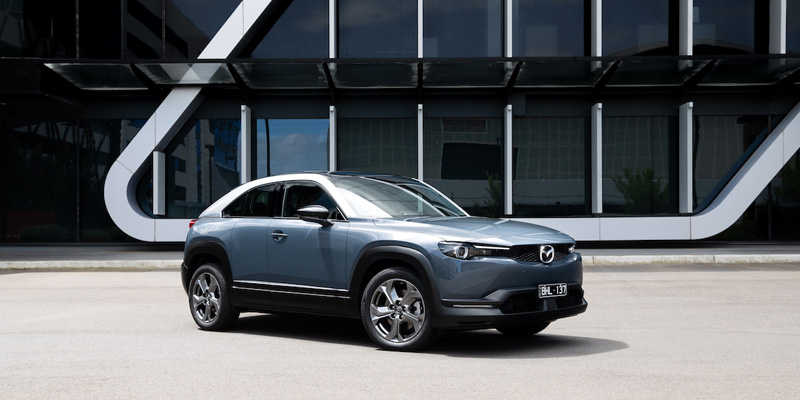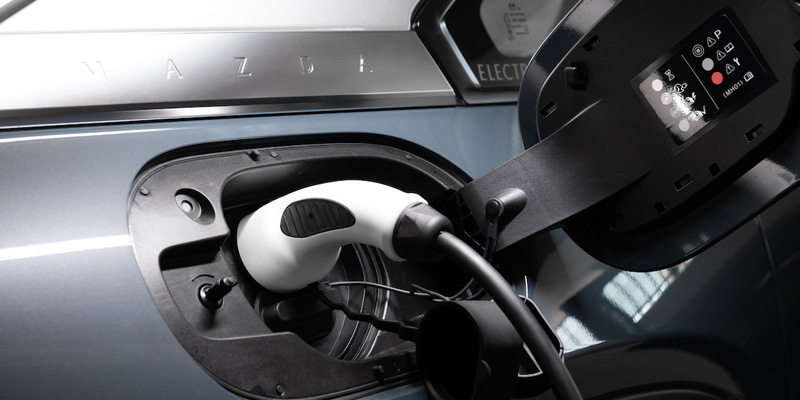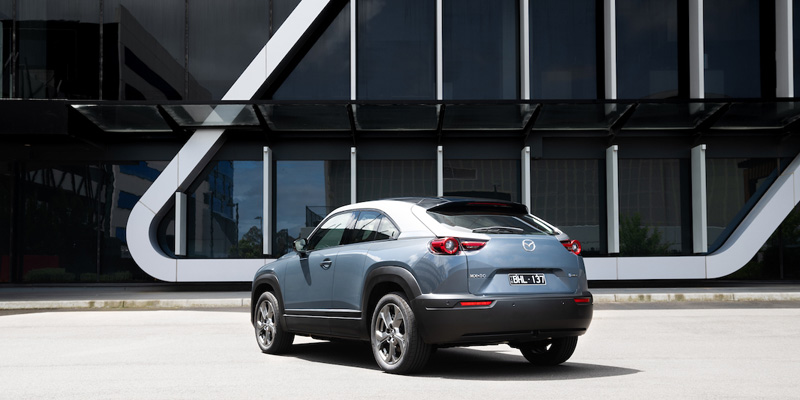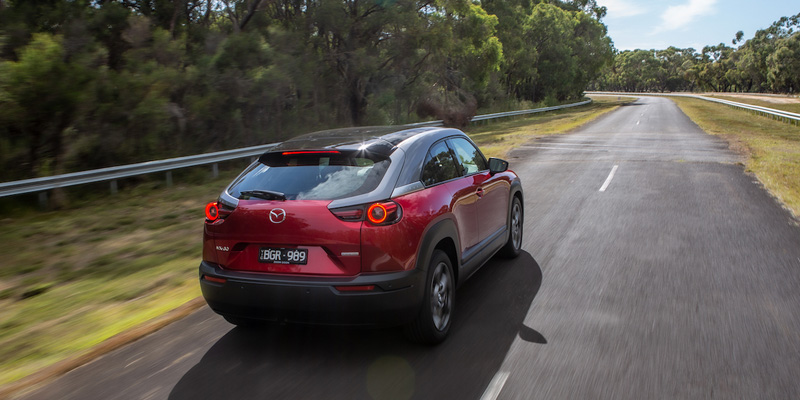

This website uses cookies to improve the user experience. We use cookies in accordance with our NRMA Group Cookie Policy.
This website uses cookies to improve the user experience. We use cookies in accordance with our NRMA Group Cookie Policy.


This rating is based on an NRMA road tester's evaluation of the vehicle against similar competitors and is provided as a guide only.
Mazda’s first steps into the electric vehicle market are significant because it, more than any other volume-selling brand, has resisted electrification, preferring instead to wring every drop of economy and performance from its petrol engines.
This strategy has produced some stunningly good vehicles and seen Mazda trailing only Toyota in total sales.
But with the wider automotive industry exploring EVs in earnest, Mazda could no longer stand idle and it has developed the MX-30. Based on the same platform as Mazda’s CX-30 compact SUV, it comes in hybrid-electric and full EV form

The MX-30 Electric is available only in top-spec Astina grade for $65,490 and has been limited to an initial release of just 100 units.
Its 35.5kWh lithium-ion battery has a theoretical 200km range and the SUV comes standard with 18-inch alloy wheels, a 12-speaker Bose sound system, head-up display, 360-degree camera, and active cruise control.
Its extensive suite of safety tech sees the Electric awarded the same five-star ANCAP safety rating as its combustion-engine counterparts.
The standard colour palette includes silver, black, and white, while premium exterior colours such as Machine Grey Metallic and Polymetal Grey Metallic cost an extra $495.
Also available is a three-tone colour scheme, which costs between $995 and $1490 depending on the colours selected.

Suicide doors, plus revised headlights, taillights and grille, distinguish the MX-30 from its petrol-powered cousin.
The two look very similar at a glance, but upon opening the door it’s evident that’s far from the case.
Some centre console panels and the cup holder lids are fashioned from sustainable cork and the upper door panels are a fabric created using recycled plastic bottles.
While that’s commendable, it doesn’t do much for the Electric’s interior presentation; in fact, it’s the antithesis of Mazda’s usual understated and elegant styling.
Beyond the eco-signalling it’s business as usual (and business is good), with impeccable build quality, a well-thought-out dash and console design, and comfortable seats.

Space has been the one shortcoming common to most Mazda SUVs in recent years and it’s exacerbated in the MX-30 Electric.
Rear occupant leg and head room are already limited in the regular CX-30 and, with batteries beneath the floor in the Electric, tall passengers can forget about using the rear seats (although the seats themselves are very comfortable).
Inconvenient suicide doors and their miniature back windows also contribute to a considerable blind spot.
The underfloor space in the cargo area is at capacity with a jack and a puncture repair kit, so Mazda has resorted to storing the EV charging cables in two material bags strapped to the wheel arch – far from ideal or presentable.
Moreover, the charging socket is on the driver’s side rear quarter panel, which is a real pain when using a kerbside charger in our right-hand drive country.
The Electric’s indicator is on the ‘correct’ side of the steering column, though.
While the electric motor develops 107kW, putting it on par with its petrol competitors, in EVs the torque figure tells the real story and 271Nm from the instant you hit the throttle is plenty.
Mazda has devised what it calls ‘aural driver feedback’, essentially a sort of hum emitted through the audio system that rises in response to the motor’s increasing torque delivery.
It’s intended to give a more ‘traditional’ sense of acceleration, but it’s not much more than a gimmick.
There’s nothing gimmicky about the MX-30’s ride and handling, however, which defy its 1645kg weight to be compliant and adept.

Price is the real issue the MX-30 Electric faces.
The Kia Niro, Hyundai Kona and Nissan Leaf e+ all have double its range, yet it retails for $65,490 before on-road costs, making it substantially more expensive.
While Mazda buyers aren’t averse to paying extra for the marque’s undeniable luxury and build quality (and brand loyalists are sure to snap up the first 100 MX-30 Electric models), anyone else in the market for an EV will find themselves asking whether leather accoutrements are really a fair trade-off for recharging twice as frequently. – Kris Ashton

Pros: Performance, ride and handling; typical Mazda quality
Cons: Charging port on ‘wrong’ side; 200km range; space limitations